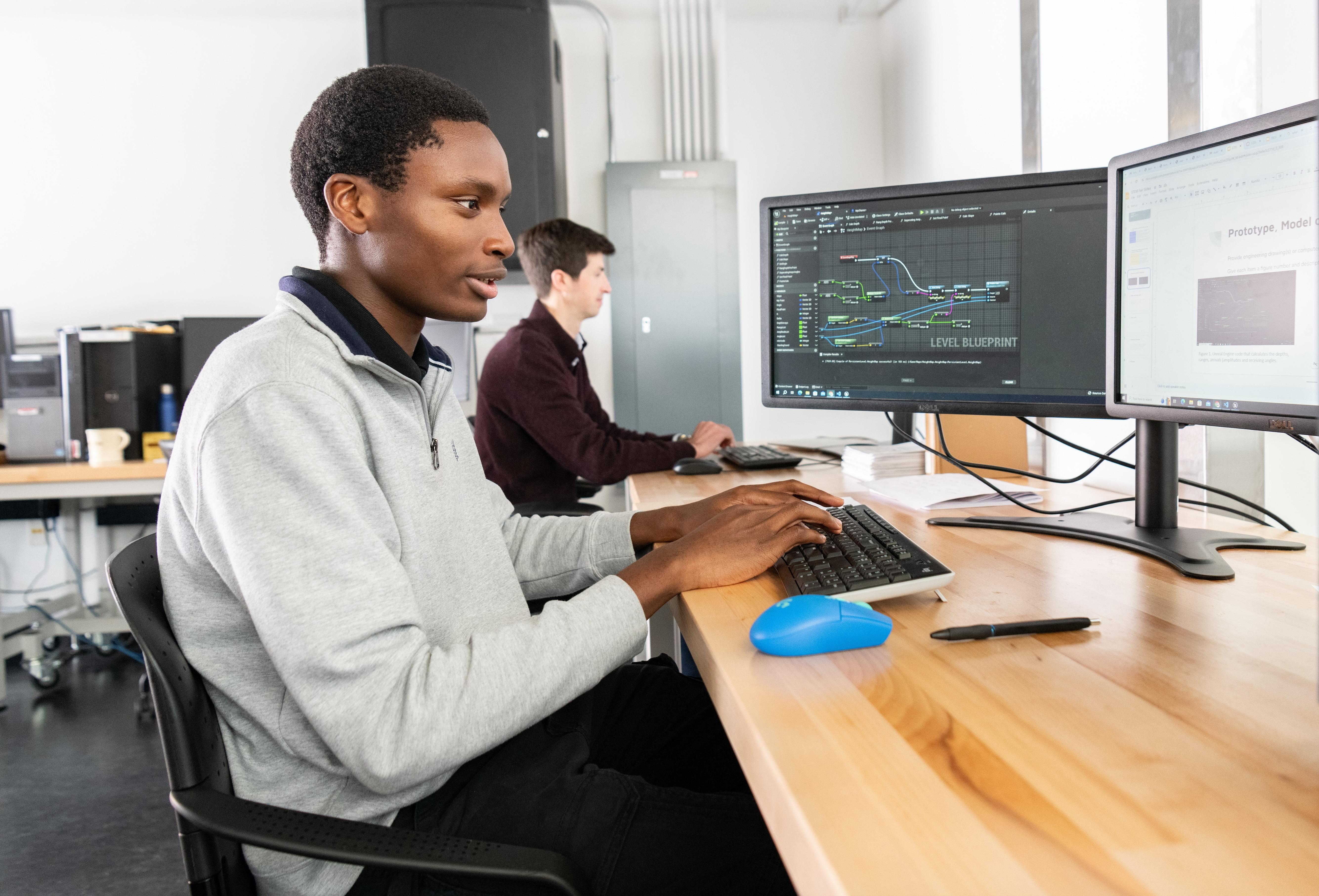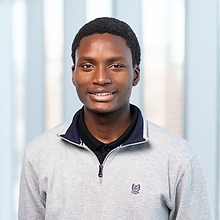
 High school senior Aaron Akolly has always looked to the stars for inspiration. With an interest in machine learning and AI development, his goal is to one day create systems for space exploration and ultimately see them put to use as part of Mars colonization efforts.
High school senior Aaron Akolly has always looked to the stars for inspiration. With an interest in machine learning and AI development, his goal is to one day create systems for space exploration and ultimately see them put to use as part of Mars colonization efforts.
A newly accepted student to UMD’s class of 2028, Akolly is getting a jumpstart by interning in the university’s Perceptual Interface and Reality Lab (PIRL), where researchers are developing an autonomous collision avoidance system for submarines.
This system will use passive sonar—listening for the sound made by vessels—to detect the presence of other ships while remaining hidden from other vessels out at sea. This is considered an advantage for military use and also safer for marine life compared to active sonar, which emits pulses of sounds and listens for echoes.
Ramani Duraiswami, a professor of computer science and director of PIRL, has appreciated having Akolly onboard.
“It is impressive to see a high school student working on a host of topics including ocean acoustics, bearing-only target motion analysis, and reinforcement learning, while simultaneously developing simulations in the platform Unreal Engine,” says Duraiswami, who also holds an appointment in the University of Maryland Institute for Advanced Computer Studies. “His work ethic and desire for knowledge have been a great asset to the lab. I foresee him having an extremely successful college career at UMD when he joins us this fall.”
Akolly is collaborating on the sonar system with James Robertson, a second-year graduate student pursuing a master’s of science degree in electrical and computer engineering.
Robertson, who also serves as an officer in the U.S. Navy, describes Akolly “as a dedicated self-starter,” adding how he has been extremely helpful in laying the key groundwork to transferring results from a simulated 2D environment to a more robust 3D environment.
“When I was told that I would be partnered with James to create a simulation for collision avoidance in submarines, my first thought was, ‘Wow that’s really cool, I wonder how I could create my own simulation for traversing Mars,’” says Akolly, who is on the computer science track at Charles Herbert Flowers High School, a comprehensive science and technology magnet school.
Akolly has been working in PIRL through Flowers’ internship program since September, which places highly motivated students at government agencies and academic institutions to complete their mandatory research projects under the mentorship of scientists, engineers and researchers. He will finish the internship in April, which he says has helped him prepare for the next step in his academic career.
“Collaborating in PIRL has been an incredible experience that has deepened my understanding of computer science concepts and honed my practical skills,” Akolly says, who plans to major in computer science or mechanical engineering. “I’ve been able to witness firsthand the communication between graduate students and how they exchange ideas with one another, creating a supportive community for learning and growth.”
—Story by Melissa Brachfeld, UMIACS communications group